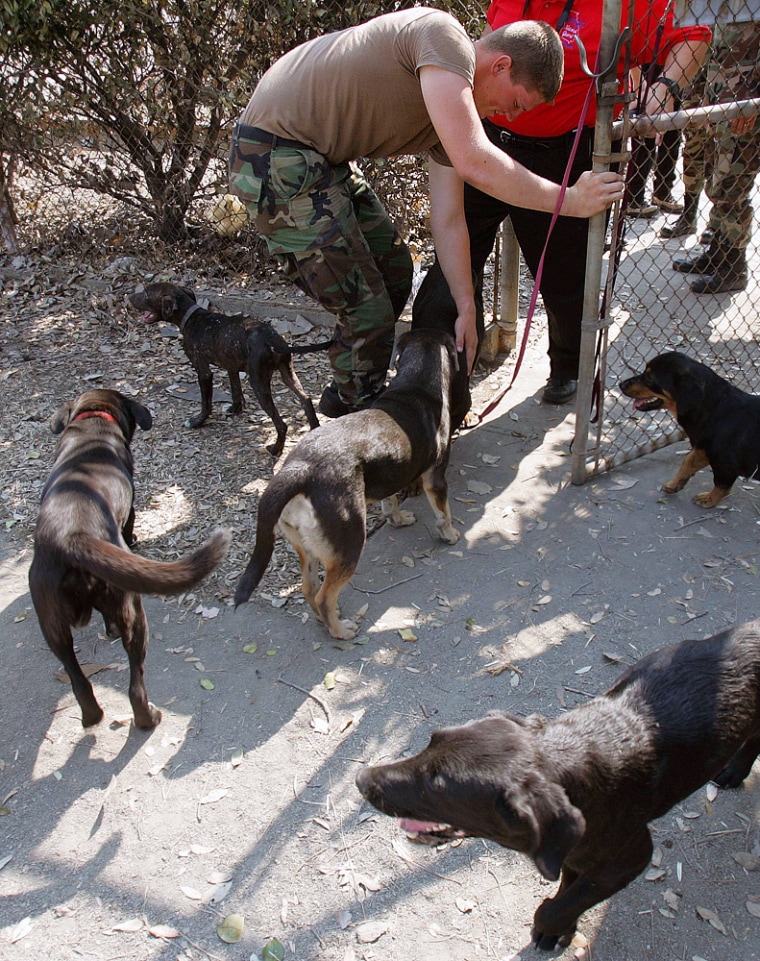Like war veterans and survivors of disasters, dogs and cats also can suffer from post-traumatic stress disorder.
Katrina survivors who are reunited with their pets may notice such signs of stress and anxiety as breaking housetraining or pottying outside the litter box, barking or meowing more than usual for no apparent reason, hiding and sometimes aggression.
In addition, dogs may pant, pace or lose weight.
How pet owners respond can make a difference in how well the pet recovers.
“One thing that people tend to do is to shower their pet with attention and affection the second they come back into a home,” says Victoria Wells, director of animal behavior for Behave Yourself, a company that offers dog training and behavioral consultation in New York City.
That’s natural for a first reunion, but if it continues day after day, it’s setting the pet up for separation anxiety when people eventually must leave to resume their normal activities of work or school.
Instead, take steps to help pets decompress and resume a normal life:
- Set up a small, secure area where the pet can get away from noise, people and other pets. This can be a crate or a laundry room or bathroom. Provide separate areas for dogs and cats.
- Whenever possible, put something familiar in the safe area: a favorite toy, food dish or even a piece of clothing you’ve worn. Scent is very comforting to animals.
- Try to get your pet to play, but at his own pace. Interactive play — chasing a ball, playing with a fishing-pole-type toy — helps alleviate stress.
- Get back to a normal feeding schedule or other routine such as a daily walk as soon as possible.
For pets that continue to show signs of anxiety or stress, schedule a veterinary exam to make sure there’s nothing physically wrong that’s contributing to the behavioral dysfunction, says John Wright, a certified animal behaviorist and professor of psychology at Mercer University in Macon, Ga.
"If it’s something that just looks like backsliding, where the dog is having a loss of housetraining, start housetraining all over as if he’s a puppy," says Wright.
"The worst thing you can do with any of these signs is to punish the animal," he says. "If some of the basis for the problem is anxiety, then punishing the dog or cat may actually increase the anxiety, and it’s not likely to make the problem better. Find ways to enable the pet to succeed."
Kim Campbell Thornton is an award-winning author who has written many articles and more than a dozen books about dogs and cats. She belongs to the Dog Writers Association of America and is past president of the Cat Writers Association. She shares her home in California with three Cavalier King Charles Spaniels and one African ringneck parakeet.
